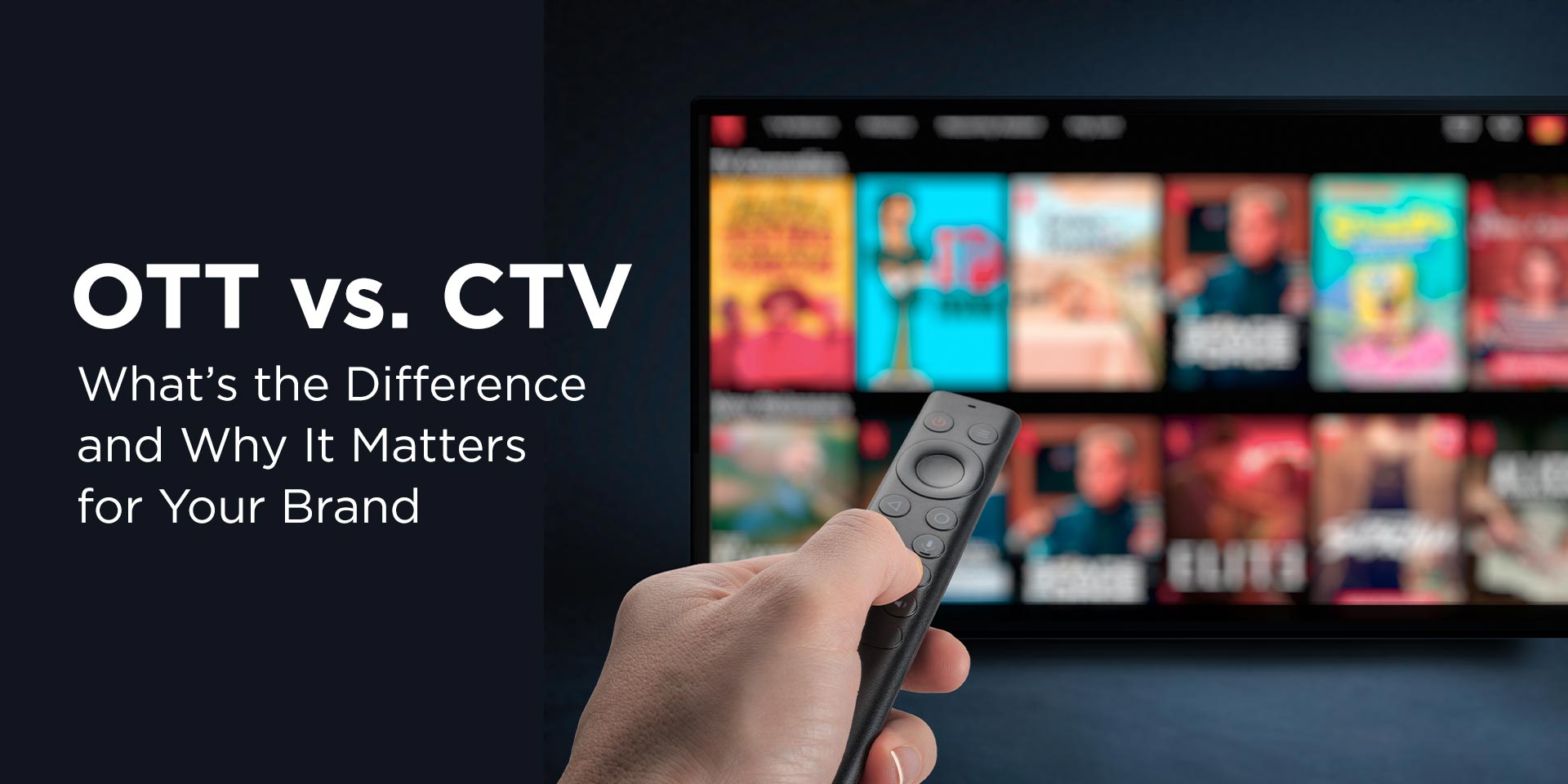What’s the Difference and Why It Matters for Your Brand
In today’s media landscape, video consumption is evolving rapidly—and so are the advertising opportunities that come with it. As streaming services dominate, two buzzwords have taken center stage in the world of digital video: OTT (Over-the-Top) and CTV (Connected TV). While they’re often used interchangeably, understanding the difference between them is key to maximizing your brand’s visibility and campaign performance.
Let’s break down how these formats differ—and why it matters when building your media strategy.
OTT vs. CTV: Breaking Down the Basics
OTT (Over-the-Top) refers to any content that is delivered over the internet, bypassing traditional cable or satellite TV providers. Think platforms like Hulu, Peacock, or Paramount+—whether viewed on a smartphone, tablet, desktop, or smart TV. OTT is the umbrella term that includes all internet-based streaming.
CTV (Connected TV), on the other hand, refers to the device itself—smart TVs or devices connected to a TV (like Roku, Amazon Fire Stick, Apple TV, or gaming consoles). CTV is a subset of OTT, focusing exclusively on streaming video delivered on the largest screen in the home.
So while all CTV is OTT, not all OTT is CTV.
Why the Distinction Matters for Marketers
Both OTT and CTV open the door to advanced targeting and measurable results—unlike traditional linear TV. But depending on your campaign goals, each offers unique advantages.
1. Audience Experience & Engagement
CTV ads appear in a lean-back environment, typically during premium, long-form content like shows and movies on the living room TV. Viewers are more likely to be engaged, and completion rates are high.
OTT, however, can include a mix of viewing experiences—from binge-watching a series on a tablet to catching a clip on a smartphone. This offers more touchpoints but also more variability in viewer attention.
2. Targeting & Reach
OTT campaigns can reach viewers across a wide range of devices, enabling omnichannel frequency and broader reach. This is ideal for reinforcing your message across platforms.
CTV, while more limited in scope, enables high-impact targeting in a more premium environment. With first-party data and device-level identifiers, you can reach specific households with precision.
3. Measurement & Optimization
Both OTT and CTV allow for real-time measurement and campaign optimization. But because OTT spans multiple devices and platforms, attribution can become more complex. CTV is generally easier to track when paired with smart household targeting and IP-level analytics.
Use Cases: When to Use Each
-
Choose OTT when you want to run a broad awareness campaign across devices and reach viewers wherever they are. It’s ideal for retargeting or multi-touch strategies.
-
Choose CTV when you’re focused on premium placements, brand storytelling, and capturing attention in a high-quality, full-screen environment. It’s perfect for product launches, sports sponsorships, or retail-driven messaging.
The Bottom Line
OTT and CTV are both powerful tools in the modern marketer’s toolkit—but knowing the difference allows you to tailor your approach and get the most out of your video ad budget. A smart strategy blends both to deliver the right message, to the right viewer, on the right screen.
Ready to make the most of your video campaigns?
Cybba’s full-service programmatic team can help you plan, execute, and optimize your OTT and CTV strategy from start to finish. Learn how we can help with your OTT/CTA Campaigns here.


